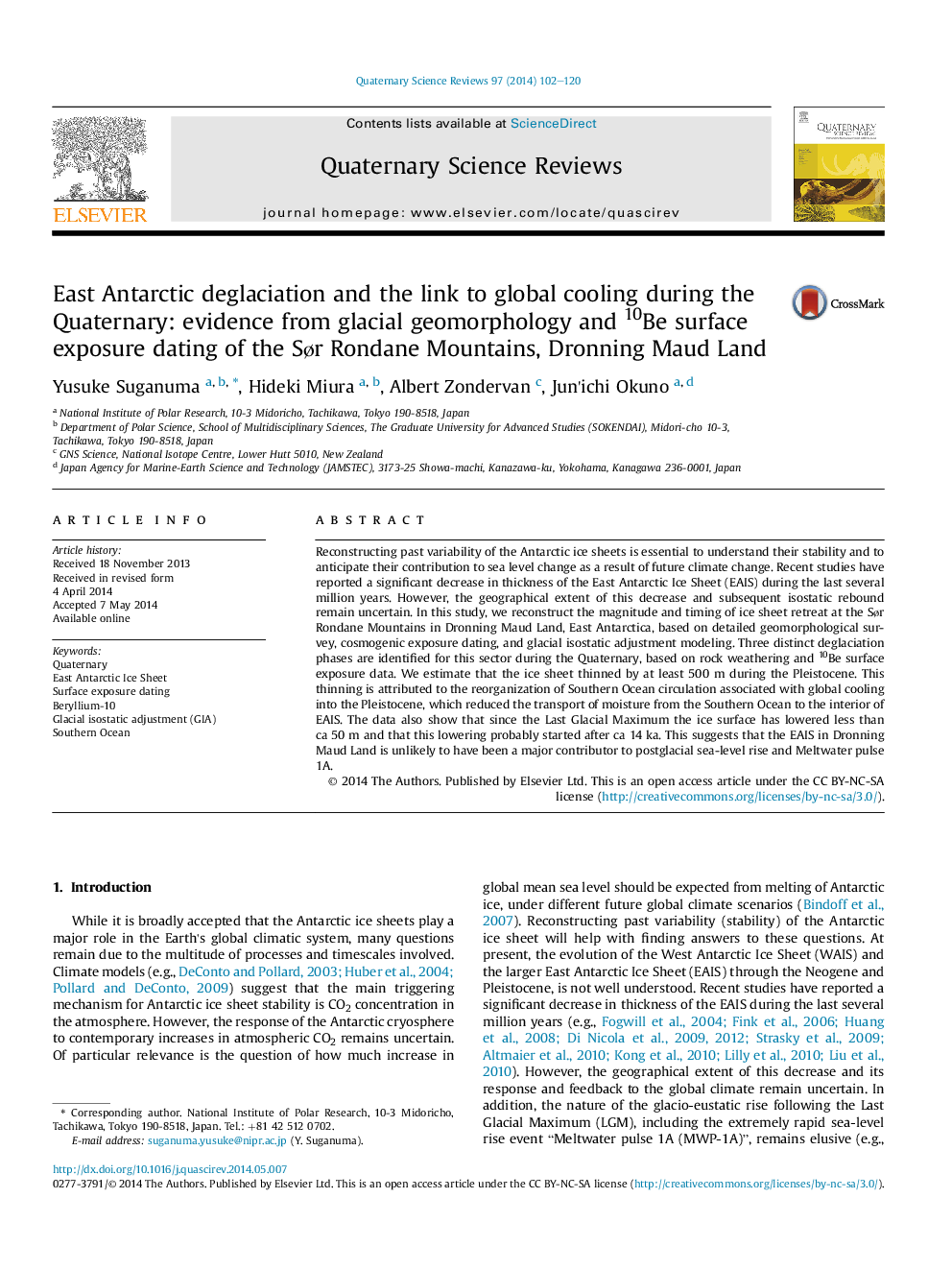| Article ID | Journal | Published Year | Pages | File Type |
|---|---|---|---|---|
| 6445674 | Quaternary Science Reviews | 2014 | 19 Pages |
Abstract
Reconstructing past variability of the Antarctic ice sheets is essential to understand their stability and to anticipate their contribution to sea level change as a result of future climate change. Recent studies have reported a significant decrease in thickness of the East Antarctic Ice Sheet (EAIS) during the last several million years. However, the geographical extent of this decrease and subsequent isostatic rebound remain uncertain. In this study, we reconstruct the magnitude and timing of ice sheet retreat at the Sør Rondane Mountains in Dronning Maud Land, East Antarctica, based on detailed geomorphological survey, cosmogenic exposure dating, and glacial isostatic adjustment modeling. Three distinct deglaciation phases are identified for this sector during the Quaternary, based on rock weathering and 10Be surface exposure data. We estimate that the ice sheet thinned by at least 500 m during the Pleistocene. This thinning is attributed to the reorganization of Southern Ocean circulation associated with global cooling into the Pleistocene, which reduced the transport of moisture from the Southern Ocean to the interior of EAIS. The data also show that since the Last Glacial Maximum the ice surface has lowered less than ca 50 m and that this lowering probably started after ca 14 ka. This suggests that the EAIS in Dronning Maud Land is unlikely to have been a major contributor to postglacial sea-level rise and Meltwater pulse 1A.
Keywords
Related Topics
Physical Sciences and Engineering
Earth and Planetary Sciences
Geology
Authors
Yusuke Suganuma, Hideki Miura, Albert Zondervan, Jun'ichi Okuno,
